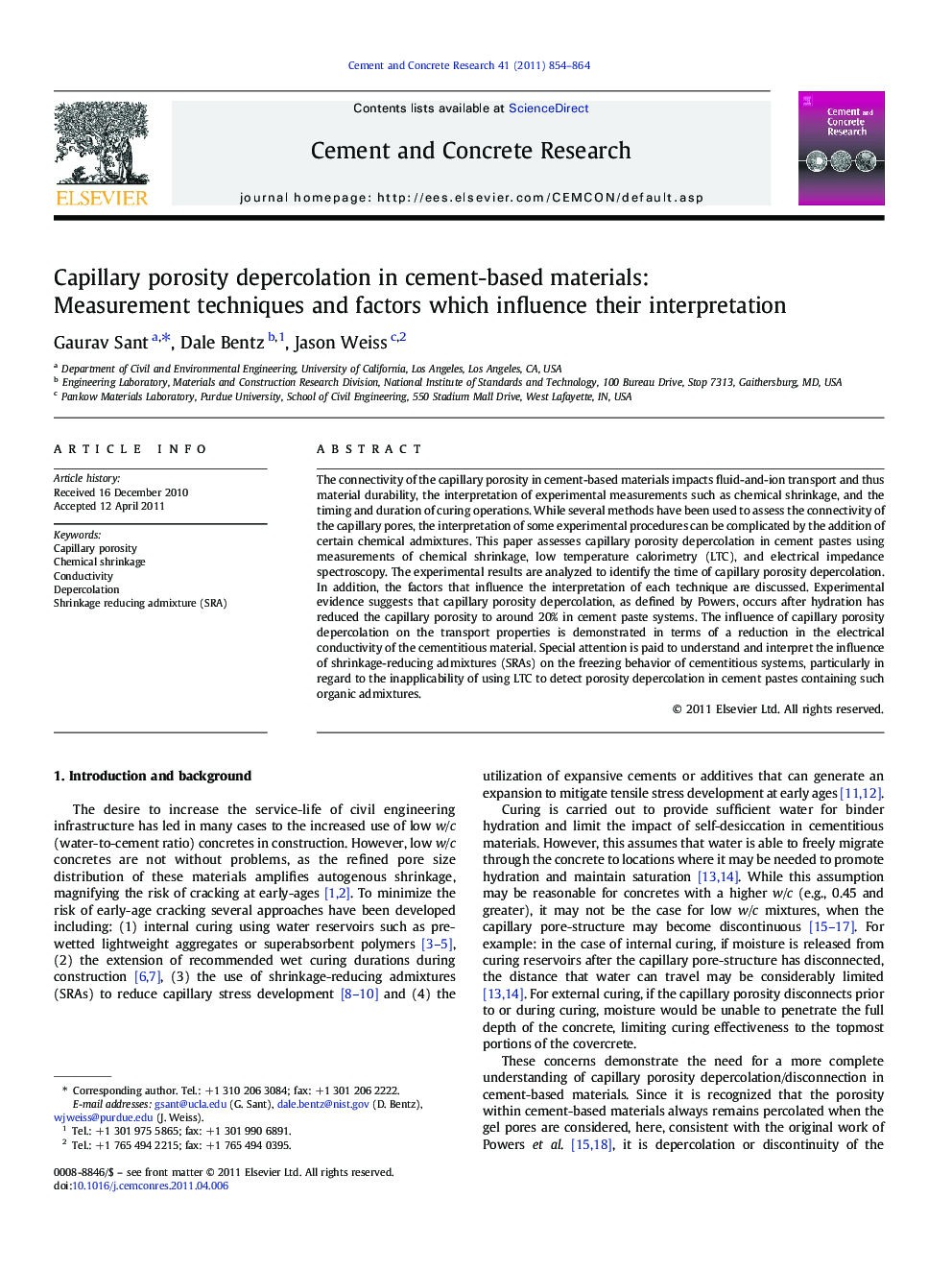| Article ID | Journal | Published Year | Pages | File Type |
|---|---|---|---|---|
| 1456993 | Cement and Concrete Research | 2011 | 11 Pages |
The connectivity of the capillary porosity in cement-based materials impacts fluid-and-ion transport and thus material durability, the interpretation of experimental measurements such as chemical shrinkage, and the timing and duration of curing operations. While several methods have been used to assess the connectivity of the capillary pores, the interpretation of some experimental procedures can be complicated by the addition of certain chemical admixtures. This paper assesses capillary porosity depercolation in cement pastes using measurements of chemical shrinkage, low temperature calorimetry (LTC), and electrical impedance spectroscopy. The experimental results are analyzed to identify the time of capillary porosity depercolation. In addition, the factors that influence the interpretation of each technique are discussed. Experimental evidence suggests that capillary porosity depercolation, as defined by Powers, occurs after hydration has reduced the capillary porosity to around 20% in cement paste systems. The influence of capillary porosity depercolation on the transport properties is demonstrated in terms of a reduction in the electrical conductivity of the cementitious material. Special attention is paid to understand and interpret the influence of shrinkage-reducing admixtures (SRAs) on the freezing behavior of cementitious systems, particularly in regard to the inapplicability of using LTC to detect porosity depercolation in cement pastes containing such organic admixtures.
